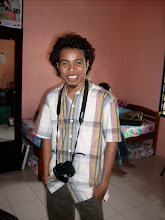8:53 AM
HISTORY EAST TIMOR
History of East Timor started with the arrival Australoid and Melanesia. People from Portugal began to trade with the island of Timor in the early 16 th century-and menjajahnya in mid-century also. After the collision occurred with some of the Netherlands, made the agreement in 1859 where Portugal provide the western part of the island. Japan over East Timor from 1942 until 1945, but after their defeat in World War II Portugal authorities back.
In the year 1975, when the flowers Revolution in Portugal and Portugal in the last Governor of East Timor, Lemos Pires, do not get answers from the Government Center in Portugal to send troops to help Timor-Leste is going civil war, Lemos Pires then ordered the army to Portuguese who survive are in Timor-Leste to Goat Island or the island of Atauro known. After that Fretilin flag down declare Portugal and Timor-Leste as the Democratic Republic of Timor-Leste on 28 November 1975. According to an official report from the UN, during the rule for 3 months when the kevakuman government in East Timor between September, October and November, Fretilin to slaughter about 60,000 of the civilian population (some the size of the woman and the husband anak2 because they are supporting the integration with faksi indonesian). Based on that, pro-integration groups and then declare the integration with Indonesia on 30 November 1975 and then ask for support for Indonesia took over East Timor's Fretilin power of the Communist follow a course.
Three Bulk grave as evidence of the slaughter Fretilin supporters integration exists in Aileu District (the middle of the Timor-Leste), respectively located in the Saboria, Manutane and Aisirimoun.
When Indonesian troops landed in East Timor on 7 December 1975, Fretilin forcing thousands of people to flee to the mountains to be a living shield or shield of life (human Shields) to the Indonesian army. More than 200,000 people from this population and the dead in the forest because of disease and hunger. Many also died in the city after submitting himself to the Indonesian army, but the International Red Palah that handle these people can not afford to save everything.
In addition to the victims of a civilian population in the forest, there was also slaughter by radical groups against Fretilin in the forest a more moderate group. So also many figures who were killed by Fretilin Fretilin fellow in the forest. All this story dikisahkan again by people such as Francisco Xavier do Amaral, President of First Timor Lesta declare the independence of East Timor in 1975. If Wiranto Genderal (at that time Lieutenant) Xavier did not save the hole where he imprisoned by Fretilin in the forest, they may Xavier can no longer be the Chairman of ASDT party in East Timor now.
On August 30, 1999, in a referendum held that the United Nations, most of the people of East Timor chose independence from Indonesia. Between the referendum until the return of UN peacekeeping troops by the end of September 1999, the anti-independence seems that Indonesia supported the slaughter replies large-scale, in which around 1,400 lives killed and 300,000 forced to flee west Timor. Most of the infrastructure such as housing, irrigation systems, water, electricity and schools destroyed. On 20 September 1999 peace troops guard International Force for East Timor (INTERFET) arrived and end this. On 20 May 2002, East Timor is recognized internationally as an independent country.
In addition to the victims of a civilian population in the forest, there was also slaughter by radical groups against Fretilin in the forest a more moderate group. So also many figures who were killed by Fretilin Fretilin fellow in the forest. All this story dikisahkan again by people such as Francisco Xavier do Amaral, President of First Timor Lesta declare the independence of East Timor in 1975. If Wiranto Genderal (at that time Lieutenant) Xavier did not save the hole where he imprisoned by Fretilin in the forest, they may Xavier can no longer be the Chairman of ASDT party in East Timor now.
On August 30, 1999, in a referendum held that the United Nations, most of the people of East Timor chose independence from Indonesia. Between the referendum until the return of UN peacekeeping troops by the end of September 1999, the anti-independence seems that Indonesia supported the slaughter replies large-scale, in which around 1,400 lives killed and 300,000 forced to flee west Timor. Most of the infrastructure such as housing, irrigation systems, water, electricity and schools destroyed. On 20 September 1999 peace troops guard International Force for East Timor (INTERFET) arrived and end this. On 20 May 2002, East Timor is recognized internationally as an independent country.
